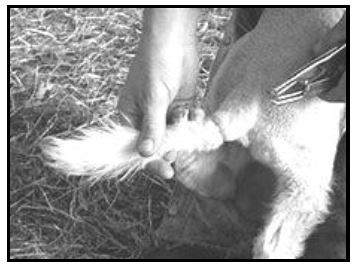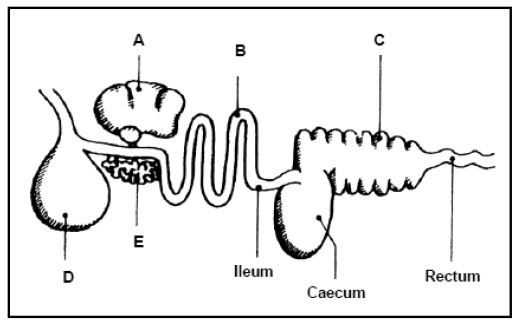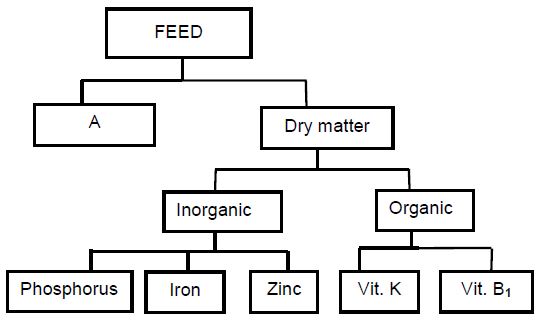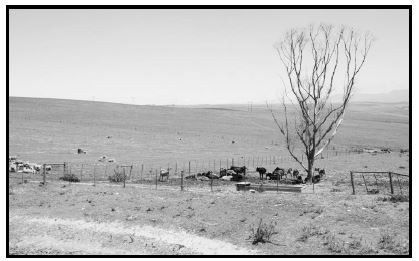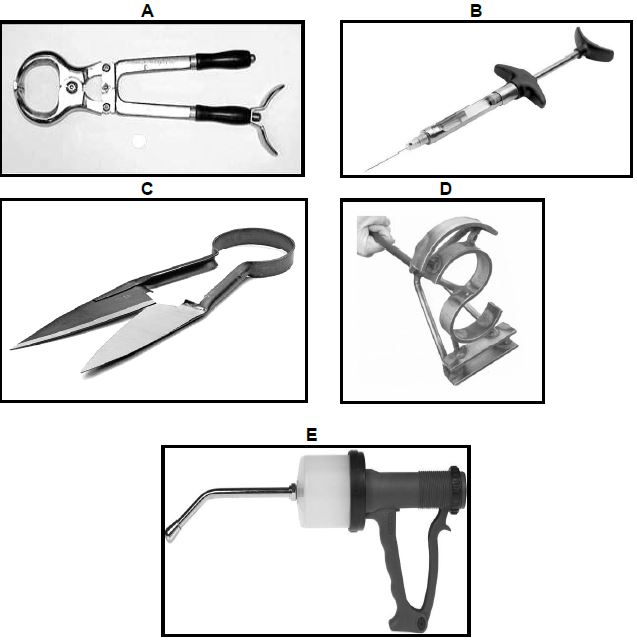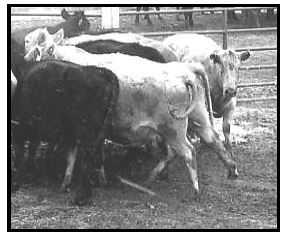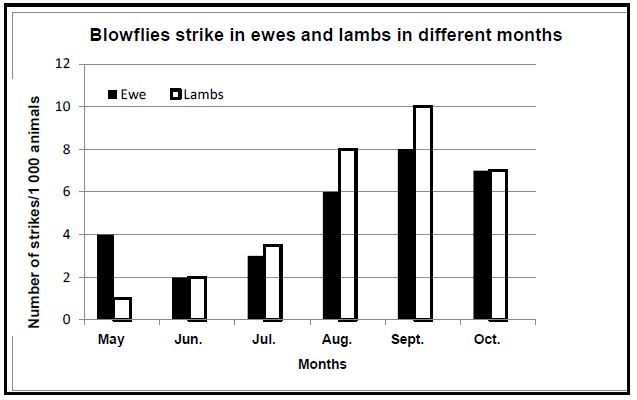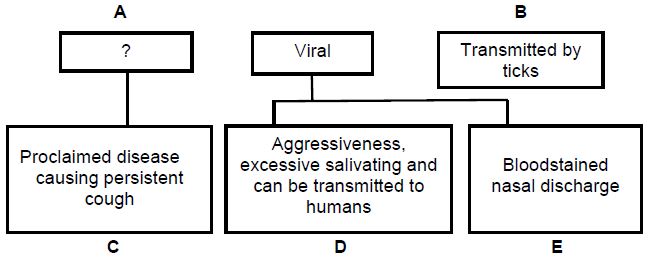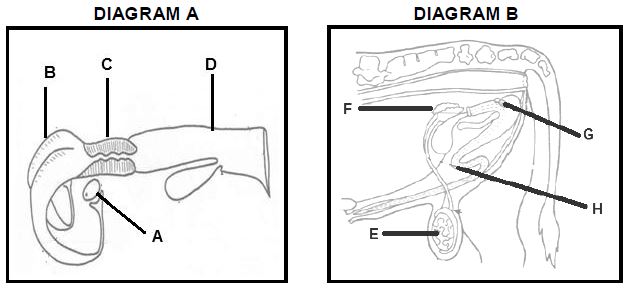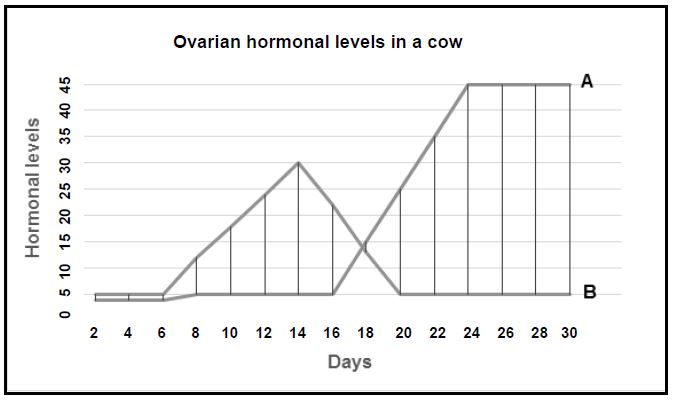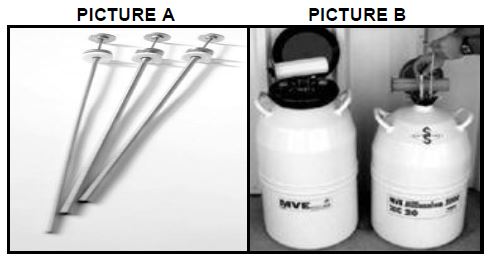AGRICULTURAL SCIENCES PAPER 1 GRADE 12 QUESTIONS - NSC EXAMS PAST PAPERS AND MEMOS MAY/JUNE 2021
Share via Whatsapp Join our WhatsApp Group Join our Telegram GroupAGRICULTURAL SCIENCES PAPER 1
GRADE 12
NATIONAL SENIOR CERTIFICATE EXAMINATIONS
MAY/JUNE 2021
INSTRUCTIONS AND INFORMATION
- This question paper consists of TWO sections, namely SECTION A and SECTION B.
- Answer ALL the questions in the ANSWER BOOK.
- Start EACH question on a NEW page.
- Number the answers correctly according to the numbering system used in this question paper.
- You may use a non-programmable calculator.
- Show ALL calculations, including formulae, where applicable.
- Write neatly and legibly.
SECTION A
QUESTION 1
1.1 Various options are provided as possible answers to the following questions. Choose the correct answer and write only the letter (A–D) next to the question numbers (1.1.1 to 1.1.10) in the ANSWER BOOK, e.g. 1.1.11 B.
1.1.1 The … in fowl is responsible for the physical digestion.
- proventriculus
- ventriculus
- crop
- caecum
1.1.2 Lipase is an enzyme that helps to break down fat into …
- glucose and fatty acids.
- glucose and glycerol.
- glycerol and fatty acids.
- glucose and galactose.
1.1.3 It is important to feed roughage to a fully grown ruminant because it:
- Prevents the accumulation of gases when grazing on lucerne
- Stimulates the development of the rumen
- Supplies bulkiness to the ration
- Ensures that digestion takes place properly
Choose the CORRECT combination:- (i), (iii) and (iv)
- (i), (ii) and (iv)
- (i), (ii) and (iii)
- (ii), (iii) and (iv)
1.1.4 In a cafeteria style, farm animals are allowed to …
- eat less minerals than they require.
- get minerals through drinking water.
- eat more minerals than they require.
- take minerals according to their individual needs.
Agricultural Sciences/P1 4 DBE/2021
1.1.5 The picture below illustrates ... as a reason for handling farm animals.
- weighing
- castration
- trimming
- docking
1.1.6 The purpose of vaccination is mainly to … diseases in farm animals.
- control
- prevent
- prolong
- treat
1.1.7 The following statements are TRUE with regard to the use of foldable curtains in a broiler house:
- The effect of environmental temperature is controlled.
- Efficient feed utilisation can be achieved.
- It darkens the broiler house to increase feed consumption.
- It is a necessary feature to reduce the effect of heat stress.
Choose the CORRECT combination:- (i), (ii) and (iii)
- (i), (ii) and (iv)
- (ii), (iii) and (iv)
- (i), (iii) and (iv)
1.1.8 Which ONE of the following combinations of diseases is classified as proclaimed viral diseases?
- Rabies and anthrax
- Swine fever and tuberculosis
- Rabies and foot-and-mouth disease
- Rift Valley fever and anthrax
- Agricultural Sciences/P1 5 DBE/2021
1.1.9 … are the congenital defects in bulls leading to sterility.
- Prolapse and double cervical canal
- Cryptorchidism and an injured penis
- Hypoplasia and hermaphroditism
- Sexual immaturity and diseases
1.1.10 The accumulation of cerebrospinal fluid in the brain of a foetus leading to difficult parturition:
- Hydrocephalus
- Metritis
- Flexion
- Hydrops foetus (10 x 2)
(20)
1.2 Indicate whether each of the descriptions in COLUMN B applies to A ONLY, B ONLY, BOTH A AND B or NONE of the items in COLUMN A. Write A only, B only, both A and B or none next to the question number (1.2.1 to 1.2.5) in the ANSWER BOOK, e.g. 1.2.6 B only.
| COLUMN A | COLUMN B | ||
| 1.2.1 | A | Urea | A non-protein nitrogen substance that is safer to use because it is less soluble |
| B | Biuret | ||
| 1.2.2 | A | NR 1:4 | Feed containing a lot of protein with a high biological value |
| B | NR 1:7 | ||
| 1.2.3 | A | Dipping | Chemical method to control parasites |
| B | Dosing | ||
| 1.2.4 | A | Backyard | A system of keeping each layer in her own small wire cage for the entire productive cycle |
| B | Deep litter | ||
| 1.2.5 | A | Follicle stimulating Hormone (FSH) | Hormone preventing the growth and ripening of the Graafian follicle |
| B | Progesterone | ||
1.3 Give ONE word/term for EACH of the following descriptions. Write only the word/term next to the question numbers (1.3.1 to 1.3.5) in the ANSWER BOOK.
1.3.1The type of animal feed that contains a small volume per unit mass
1.3.2 A permanent handling facility used to restrict the movement of a bull and lead it towards a loading ramp
1.3.3 The process in lactating cows that is stimulated by hormones resulting in the flow of milk
1.3.4 The cell that fuses with the ovum during the process of fertilisation
1.3.5 The transfer of a fertilised ovum from one cow to another (5 x 2)
(10)
1.4 Change the UNDERLINED WORD in EACH of the following statements to make them TRUE. Write only the answer next to the question numbers (1.4.1 to 1.4.5) in the ANSWER BOOK.
1.4.1 Tranquilisers stimulate the growth of farm animals by causing the secretion of a thyroxin hormone.
1.4.2 Cleaning is the application of chemicals to create an environment free from disease-causing micro-organisms.
1.4.3 The ovum phase is characterised by cell differentiation into tissues, organs and systems.
1.4.4 Fertilisation is the process where female animals in a herd are made to come into oestrus simultaneously.
1.4.5 The epididymis is responsible for the production of the male sex hormone in bulls. (5 x 1)
(5)
TOTAL SECTION A: 45
SECTION B
QUESTION 2: ANIMAL NUTRITION
Start this question on a NEW page.
2.1 The diagram below shows the alimentary canal of a farm animal.
2.1.1 Name the farm animal whose alimentary canal is represented in the diagram above. (1)
2.1.2 Refer to the diagram to motivate the answer to QUESTION 2.1.1. (1)
2.1.3 Physical and chemical digestion in the alimentary canal of the farm animal named in QUESTION 2.1.1 takes place in the mouth. Justify this statement. (2)
2.1.4 Identify, in the diagram above, the part where EACH of the following occurs (write only the letter):
- Soluble food particles move into the blood (1)
- Soluble caseinogen in milk is changed into insoluble case in (1)
- Bile is produced (1)
2.1.5 Identify the part in the alimentary canal of ruminant farm animals that corresponds to D in the diagram above in terms of functioning. (1)
2.2 The flow chart below shows components of feed needed by farm animals for effective functioning.
2.2.1 State TWO roles of component A in digestion of farm animals. (2)
2.2.2 Identify the component in the flow chart above that will result in the following deficiency symptoms:
- Slow healing of wounds in farm animals (1)
- Excessive bleeding in chickens (1)
- Chewing of dry bones by farm animals (1)
2.2.3 Indicate the organic component in the flow chart above that is:
- Fat soluble (1)
- Water soluble (1)
2.3 In a feed digestibility trial, two ruminant animals were each given 12 kg of dry feed. The dry mass of the manure was determined. The results are shown below.
| ANIMAL A | ANIMAL B | |
| Dry mass of manure (kg) | 2 | 7 |
| Digestible co-efficient (%) | 83 | ? |
2.3.1 Calculate the digestibility coefficient of the feed in ANIMAL B. Include the formula.(4)
2.3.2 Deduce TWO animal related factors that might have influenced the digestibility of the feed given to ANIMAL A and ANIMAL B. (2)
2.3.3 Name TWO methods by which to increase the digestibility of the feed in ANIMAL B. (2)
2.4 A lamb was given a feed containing 50% total digestible nutrients and 5% digestible protein.
2.4.1 Calculate the nutritive ratio (NR) of this feed. (3)
2.4.2 Based on the calculated nutritive ratio in QUESTION 2.4.1, indicate the suitability of this feed for its intended purpose. (1)
2.4.3 Give a reason for the answer to QUESTION 2.4.2. (1)
2.4.4 Classify this feed that was given to the lamb. (1)
2.4.5 State ONE advantage of feeding the lamb with the feed in QUESTION 2.4.4. (1)
2.5 The table below shows a fodder flow programme in a sheep production unit over a period of 6 months.
| MONTHS | 1 | 2 | 3 | 4 | 5 | 6 |
| Feed available (tons) | 36 | 24 | 20 | 16 | 12 | 4 |
| Number of animals | 50 | 50 | 50 | 50 | 50 | 50 |
| Requirement (kg/animal/day) | 5 | 5 | 5 | 5 | 5 | 5 |
| Total requirement (tons) | 7,5 | 7,5 | 7,5 | 7,5 | 7,5 | 7,5 |
2.5.1 Calculate the total amount of feed required (in tons) by the animals in month 6. (3)
2.5.2 Deduce the problem in the fodder flow programme above. (1)
2.5.3 Give a reason for your answer to QUESTION 2.5.2 based on the table. (1)
[35]
QUESTION 3: ANIMAL PRODUCTION, PROTECTION AND CONTROL
Start this question on a NEW page.
3.1 The picture below shows an animal production system.
3.1.1 Identify the production system shown in the picture above. (1)
3.1.2 Give TWO reasons, based on the picture above, to justify the answer to QUESTION 3.1.1. (2)
3.1.3 Compare the TWO production systems used in livestock enterprises based on the following:
- Production output per unit area (2)
- Disease transmission (2)
3.2 The pieces of equipment below are utilised for different handling techniques of farm animals.
3.2.1 Match equipment (A–E) above with the handling techniques ((a)–(e)) below, e.g. (a) F:
- Crutching the wool in the wet areas around the tail (1)
- Branding of cattle (1)
- Castration of older calves (1)
- Oral administration of worm remedies (1)
- Intravenous administration of medicines (1)
3.2.2 Give TWO reasons for handling cattle, other than the ones indicated in QUESTION 3.2.1. (2)
3.3 The picture below shows a certain behaviour in farm animals.
3.3.1 Identify the behaviour shown by farm animals above. (1)
3.3.2 Indicate the cause of the following farm animal behaviour:
- Cattle refusing to get into the plunge dip (1)
- Chicks moving away from each other with open beaks and rapid breathing (1)
- Sheep turning disorderly and not easy to handle individually (1)
3.4 Parasites are a common problem to livestock farmers and they result in serious financial implications.
3.4.1 Classify the type of parasite illustrated in the graph above. (1)
3.4.2 Indicate the month with the highest blowfly infestation. (1)
3.4.3 Deduce the rate of infestation by the blowfly in both ewes and lambs during the months of:
- May (1)
- August (1)
3.4.4 State a financial implication for the farmer if the blowfly infestation is allowed to rise. (1)
3.4.5 State ONE preventative measure by wool sheep farmers to reduce the impact of this parasite. (1)
3.5 The flow chart below shows the different farm animal diseases.
3.5.1 Identify the pathogen responsible for diseases A and B. (2)
3.5.2 Indicate the transmission mode of the virus for disease D. (1)
3.5.3 Name the vector that carries viral disease E during hot, wet seasons. (1)
3.5.4 Advise the farmer on a preventative measure for the occurrence of disease E. n(1)
3.5.5 Suggest TWO measures the state can take to control the spread of disease C, once detected. (2)
3.6
| Poisoning is common in farm animals that are deprived of fresh, clean water while being exposed to diets high in sodium chloride. |
3.6.1 Name the type of poisoning referred to in the statement above. (1)
3.6.2 Identify the mineral source of the poisoning from the statement above. (1)
3.6.3 Name ONE treatment measure if animals get this form of poisoning. n(1)
3.6.4 State a preventative measure for this form of poisoning. (1)
[35]
QUESTION 4 : ANIMAL REPRODUCTION
Start this question on a NEW page.
4.1 The diagrams below illustrate the reproductive systems of cattle.
4.1.1 Identify the diagram (A or B) above that represents the reproductive system of a cow. (1)
4.1.2 Give ONE visible reason in the diagram for the answer to QUESTION 4.1.1. (1)
4.1.3 Name parts C and G. (2)
4.1.4 Give a function of EACH of the following:
- Part B (1)
- The fluid secreted by part F (1)
4.1.5 Identify the letter representing the part where gametes are formed in DIAGRAM B. (1)
4.2 Mating is a natural process that occurs in stages. Below is a list of some of the stages involved.
- Semen is released into the vagina.
- A bull gains intromission into the vagina.
- A bull shows interest in a cow.
- A bull stands on his rear legs and rests on the rear end of the cow.
4.2.1 Rearrange the stages of mating above in their chronological order. (4)
4.2.2 State the stage NOT indicated above. (1)
4.2.3 Name the hormone that regulates the mating behaviour in bulls. (1)
4.3 The graph below shows the levels of ovarian hormones in a cow.
4.3.1 Identify the letter (A or B) representing the following hormones:
- Oestrogen (1)
- Progesterone (1)
4.3.2 Name the stage in the oestrus cycle:
- Between day 2 and day 6 (1)
- At day 14 (1)
4.3.3 The cow fell pregnant on day 16. Refer to the hormonal levels to justify this statement. (2)
4.3.4 Name the stage in a normal reproductive cycle of a cow 282 days after insemination. (1
4.4 The table below shows the milk yield of two groups of lactating cows over a period of 25 weeks.
| MILK YIELD (litres) | ||
| WEEK | GROUP 1 | GROUP 2 |
| 5 | 10 | 13 |
| 10 | 25 | 16 |
| 15 | 15 | 18 |
| 20 | 13 | 20 |
| 25 | 10 | 20 |
4.4.1 Draw a bar graph showing the milk yield of the two groups of lactating cows. (6)
4.4.2 Compare the milk yield in both groups over the weeks. (2)
4.5 The equipment/apparatus used during artificial insemination (AI) is shown below.
4.5.1 State the function of the apparatus in PICTURE A and the equipment in PICTURE B during AI. (2)
4.5.2 Name the reproductive part where the apparatus in PICTURE A is placed during AI. (1)
4.5.3 Name TWO basic requirements when the equipment in PICTURE B is used. (2)
4.5.4 State TWO challenges of using the equipment in PICTURE B. (2)
[35]
TOTAL SECTION B: 105
GRAND TOTAL: 150
